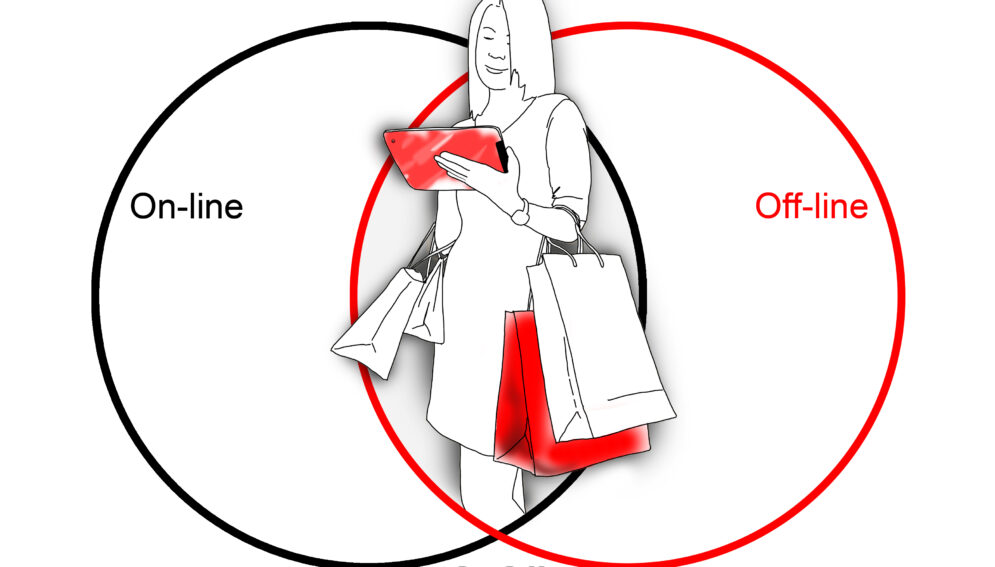I got married in July 1976. As a lover of amateur photography, my father wanted to take charge of taking the photos instead of hiring a professional. And we weren’t about to argue with him? Of course don’t.
On the day of the wedding, there was a technical issue with the stills camera and not a single complete photo was taken. There is just one in which my wife and I appear together. On the upside, our friends were spared long evenings viewing the interminable wedding album.
Digitization: a revolution
The story above was a personal anecdote from the analogue age. Nowadays, we would have hundreds of photos thanks to family and friends. The difference is that digitization has spread far and wide to reach almost everyone.
Mass access to digitization marks one of the greatest revolutions in the history of mankind. It enables any person to perform all manner of tasks, such as creating texts and images, editing, sending or receiving them at any time from anywhere, simply and instantly, at almost no cost.
This has a huge impact on the majority of social and commercial processes. For instance, most people who go to buy a car will have got information online beforehand.
And that is just the tip of the iceberg. Imagine José, a member of my team, is going to negotiate a contract with a potential client next Monday, and I have to give him a few pointers in advance. Using my mobile, I check out the client’s company and search for their financial details. I find the information I want, copy it and then perform a number of operations with the data on a spreadsheet program, all on the same phone. I copy the final result and paste it into an email, which I send on the phone straight to José: “This is the best price that you can offer.” Due to my bad memory, I decide to draft a quick internal note of the calculation process I have used, which is saved on to my phone. This has meant that I have been able to deal with business while sitting on the beach.
Dear reader, take a moment to think about at which points during the process I was online and offline.
Search information on the internet
Using the spreadsheet
Sending the email
Writing a memo
Online
Offline
Online
Offline
When you read the story a moment ago, did you notice how I had jumped repeatedly between the digital and the analogue world?
The On-Off people
We are witnessing the emergence of a new type of customer: the On-Off person.
The On-Off person is empowered because they take advantage of the benefits of digitization through their internet-enabled phone, without really noticing when they are online and offline, hence the term ‘On-Off’.
Making use of digitization through smartphones and tablets is a secondary revolution within the digital revolution itself. It has a great impact on people’s lives, the way they buy, consume, use and share ideas, and, in general, how the live. The implications for businesses are massive.
There were two driving forces behind the first revolution: the digitization and the availability of digital technologies to the general public.
The rise of the On-Off customer is due to the simple and accessible use offered by mobile phones and tablets equipped with a screen operated using fingers. This feature has introduced the sense of touch into the digital arena.
Wanted. On-Off people required
The number of On-Off people just keeps on growing. In 2012, 30% of the world population owned a smartphone, while in Spain the figure reached 50% (1).
On-Off people can be found in the doctor’s waiting room, on the metro and pretty much anywhere. They use their phones both when they are on their own and in company. They represent a new way of socializing.
It is not only youngsters that are On-Off. It is increasingly common to see older people using digital tablets with ease. At 85 and 87 years old, my mother and father are on their tablets every day without fail.
Let me ask you a question: how far is your mobile from your body now? Perhaps it is as little as 2 cm. The 96% of On-Off people have their smartphone less than a metre away from them at all times, 24 hours a day.
This means that the phone has, in fact, become an extension of their body, a continuation of their hands. As I often say, we are actually becoming bionic. This feature makes it incredibly easy and convenient in terms of living life, being a tourist in an unknown city or avoiding a traffic jam. Viewed as such, it is easy to understand why, for many On-Off people, a day without their smartphone is a very tough day indeed.
The customer, the store
The above facts give rise to an important consequence. What becomes clear is that a smartphone is a store, even though the customer pays it.
If, as we have just seen, the phone has become part of the body, the natural conclusion of this train of logic is that the customer has become the store.
And this idea is not – joke: it is a reality that forces us to rethink the whole model of retail trade.
The customer no longer has to go into as many stores to do their shopping because they themselves are the store. The key factor will be that the interface, or app, is on their telephone and that there is a very healthy relationship between the customer and their app-store brand. The focus will no longer be on running effective promotions but rather on how this app-store contributes to certain moments to the life of this customer/person.
When making purchases, On-Off customers use their phones when they need information, without even noticing whether they are on or offline.
This makes purchasing processes much more complex and nonlinear. They may start off in the physical store, move on to the telephone and end up buying online at home, or vice versa. Once again, this raises the possibility of reengineering to innovate within the sales process.
Final considerations
With the rise of the On-Off customer, it no longer makes sense to think of separate online, or indeed offline, businesses. Whenever somebody tells me that they have are running a start-up, I just assume there are talking about an online project.
My first concern is whether the business proposition they are setting up might be valid for a different time, when we first realised that we wanted go online and we began the purchasing process by turning on the computer.
Smartphone apps must be firmly founded on one or both of the following key pillars:
- Convenience, providing a better quality at a particular moment or in a certain situation.
- Amenity, surprise or fun. A smile lights up the world more than the sun.
And they must always be focused on how and when they will be used or, to put it another way, the context of their use, because they are destined to become an extension of the person-customer’s own body.
[1] Data from the study ‘Mobile Life 2012’ conducted by TNS.
Bibliography
Neslin, S. A. & V. Shankar. 2009 “Key Issues in Multichannel Customer Management: Current Knowledge and Future Directions”. Journal of Interactive Marketing, Vol. 23, No. 1, pp. 70 – 81.
Rangaswamy, A.; & Van Bruggern, G. (2005) “Opportunities and challenges in multichannel marketing: an introduction to the special issue”. Journal of Interactive Marketing. Vol. 19, No. 2, pp. 5 – 11.
TNS (2013) Study: ‘Mobile Life 2012’.
Verhoef, P.; Neslin, S.; & Vroomen, B. (2007) “Multichannel customer management: Understanding the research-shopper phenomenon”. Journal of Research in Marketing, Vol. 24, pp. 129 – 148.
_____________
Lluis Martinez-Ribes
Source: Código 84, Special Conference nº.




